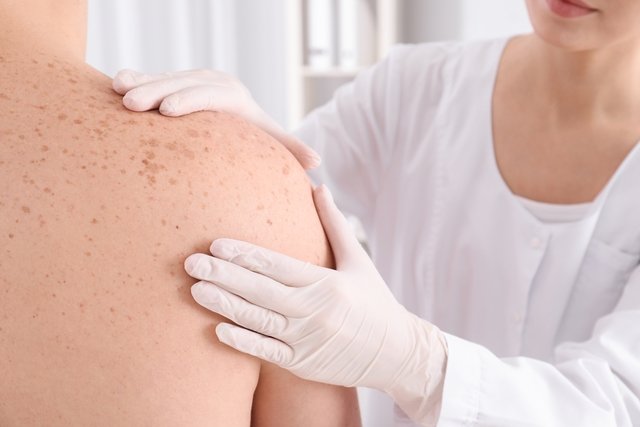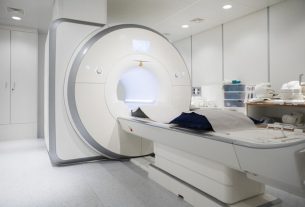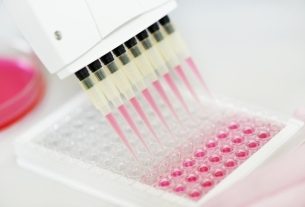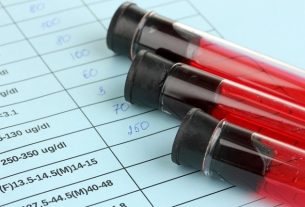Skin biopsy is a simple and quick procedure, carried out under local anesthesia, and can be recommended by a dermatologist with the aim of investigating any changes in the skin that could be indicative of malignancy or that could interfere with the person’s quality of life.
This way, when checking the presence of changes in the skin, the doctor can collect a small sample from the altered area and send it to the laboratory so that the analysis can be carried out and, thus, it is possible to know if there is tissue involvement and how serious it is. , which is important for the doctor to indicate the most appropriate treatment.
The type of biopsy to be performed by the doctor varies according to the characteristics of the lesion, and the biopsy can be performed by excision, incision, scraping, aspiration or by “punch“, for example.

What is it for
A skin biopsy is used to diagnose the cause of symptoms such as asymmetrical spots or spots with irregular edges, wounds that do not heal, peeling or blisters on the skin, for example.
This type of procedure is carried out by the dermatologist in order to identify different skin diseases and thus indicate the most appropriate treatment.
Make an appointment with the dermatologist in the region closest to you:
Taking care of your health has never been easier!
When is it indicated
A skin biopsy is recommended by a dermatologist in the following situations:
- Dark spots on the skin that grow over time;
- Inflammatory signs on the skin;
- Abnormal growths on the skin, such as moles,
- Cysts with cancerous characteristics;
- Fungal or bacterial infections on the skin;
- Inflammatory skin diseases such as dermatitis or eczema;
- Warts;
- Skin cancer.
Typically, skin biopsy is recommended after identifying changes in the skin through dermoscopy examination. Understand what dermoscopy is and how it is performed.
Check out the following video for some signs that may be indicative of skin cancer that are observed by the doctor before performing the biopsy:
How to prepare
Preparing for the biopsy does not require special care, however, it is important to inform the doctor if you have clotting problems or if you regularly use medications, especially anticoagulants, as they can increase the risk of bleeding.
In addition, you must inform your doctor of any allergies to anesthetics or any other medication, or dressing materials.
How it is made
A skin biopsy is a simple, quick procedure that does not require hospitalization and is performed by a dermatologist using local anesthesia.
This procedure does not cause pain, however it is possible for the person to feel a burning sensation that lasts a few seconds, which is due to the application of the anesthetic to the area. After collection, the material is sent to the laboratory for analysis.
Types of biopsy
There are several types of biopsy that can be chosen by the dermatologist according to the characteristics of the lesion, the main types being:
- Biopsy by “punch“: in this type of biopsy, a cylinder with a cutting surface is placed on the skin and removes a sample that can reach the subcutaneous fat;
- Shave biopsy or “shaving“: With the help of a scalpel, the most superficial layer of the skin is removed, which is sent to the laboratory. Despite being superficial, the sample can be more extensive than that collected through biopsy. punch;
- Excision biopsy: in this type, fragments of great length and depth are removed, being more used to remove tumors or moles, for example;
- Incision biopsy: Only part of the lesion is removed, as it is large in size.
In addition, there is aspiration biopsy, in which using a needle it is possible to aspirate a sample of the tissue to be analyzed. However, this type of biopsy is not particularly suitable for analyzing skin lesions, only when the results of previous biopsies indicate cancerous lesions.
Therefore, the dermatologist may request an aspiration biopsy to be performed to determine the extent of the cancer. Understand more about how the biopsy is performed.
Care after biopsy
After the skin biopsy, it is recommended to keep the dressing in place, at least until the next day, or as recommended by the dermatologist.
Furthermore, it is important to keep the region always clean and dry until complete healing to avoid infections, and during this period you should avoid swimming in the pool or bathtub.
In some cases, an allergic reaction may occur to the anesthetic applied, which is treated immediately by the doctor.
Possible risks
A skin biopsy may cause bleeding, pain or bruising in the area where it was performed, however, these will improve within a few days.
Additionally, scar formation or infections may occur at the biopsy site.
Bibliography
- ONCOGUIDE. Biopsy for the Diagnosis of Basal Cell and Squamous Cell Skin Cancer. Available at: <http://www.oncoguia.org.br/conteudo/biopsia-para-o-diagnostico-do-cancer-de-pele-basocelular-e-espinocelular/1219/269/>. Accessed on 04 Jul 2019
- WERNER, Female. Skin biopsy and histological study. Why? For what? As?. An Bras Dermatol. Vol 84. 5 ed; 507-513, 2009
- HERMES PARDINI LABORATORY. Skin biopsy (Mole removal). Available at: <https://www3.hermespardini.com.br/pagina/1729/biopsia-de-pele.aspx>. Accessed on 04 Jul 2019
- NEWS MEDICAL. What is a Skin Biopsy?. Disponível em: <https://www.news-medical.net/health/What-is-a-Skin-Biopsy.aspx>. Acesso em 04 jul 2019
- BRAZILIAN SOCIETY OF DERMATOLOGY. Biopsy. Available at: <https://www.sbd.org.br/dermatologia/pele/procedimentos/biopsia/1/>. Accessed on 04 Jul 2019

Sign up for our newsletter and stay up to date with exclusive news
that can transform your routine!
Warning: Undefined array key "title" in /home/storelat/public_html/wp-content/plugins/link-whisper-premium/templates/frontend/related-posts.php on line 12
Warning: Undefined array key "title_tag" in /home/storelat/public_html/wp-content/plugins/link-whisper-premium/templates/frontend/related-posts.php on line 13




